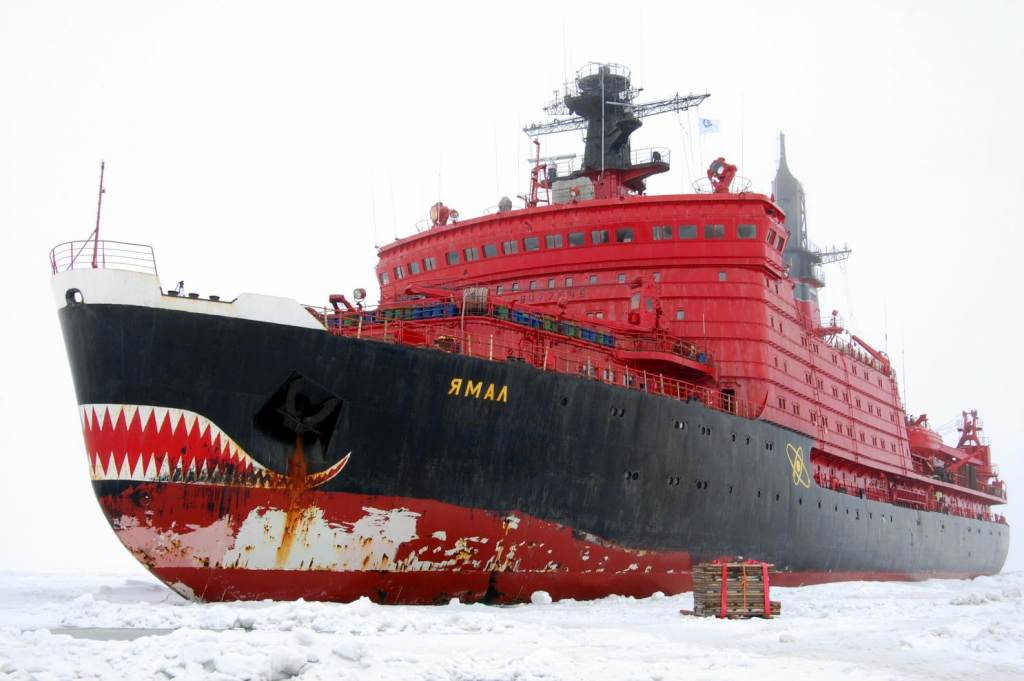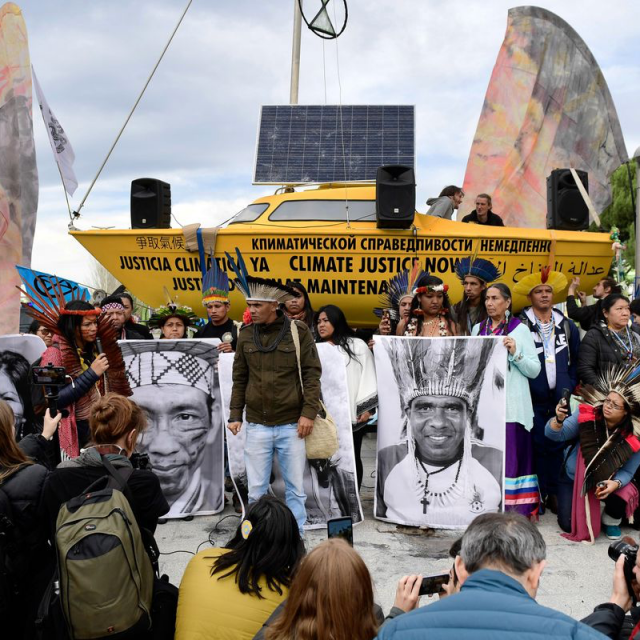It’s a sight that is causing increasing concern across the globe. The melting icecap in the Arctic is widely seen as a serious threat to civilisation as we know it.
A recent study suggests that if the current trends are not changed, the sea level rise would exceed 2 metres leading to the loss of 1.8 million km2of land and displacing up to 187 million people.
Unusually high temperatures inside the Arctic Circle have caused the ice sheet to shrink by 13 per cent over the past decade, according to NASA data.
A stark warning came from the OECD International Energy Agency earlier this month that investment in low-carbon sources of energy, first of all renewables and nuclear, are drastically short of what is needed to contain global warming below the desired 2℃. Growth in solar and wind has stalled while investment in new nuclear capacity is about 40% less than it should be on the sustainable development path.
But the global transport sector, the second largest source of CO2 emissions after electricity and heat generation, including maritime transport in particular (which causes emissions equivalent to 1 billion tons of CO2 each year) is badly under-performing too.
But now, a relatively new innovation may be able to help combat the onset of environmental change in the region… so-called SMRs (small modular reactors).
For years the Northern Sea Route, (NSR), which stretches from the Bering Strait between Russia and the US along the far north of Russia to its exit close to Norway, has been seen as a potential alternative to the Suez Canal route and which could save about 3.3 million tonnes of emissions every year.
Cargoes departing from Europe and taking the NSR can reach Asian ports 40% faster than by passing through the Suez. The problem is that the Arctic has been historically been traversable only from July to October.

Previous generations of icebreakers were not powerful enough to ensure year-round navigation in the thick Arctic ice, which, combined with the lack of coastal infrastructure, were a restraint on such ambitions. Using fossil fuels to power new ports and settlements along the route would have caused more emissions than those saved as a result of a shorter travel distance.
In 2018, relatively few vessels chose the Arctic shortcut between Asia and Europe.
According to the Centre for High North Logistics, a Norwegian information hub on Arctic transport and logistics, a total of 491,000 tons of cargo was shipped transit across the Northern Sea Route in 2018. That is more than the previous two years, but still insignificant compared with other routes.
Russia has made the Northern Sea Route a top policy priority and Vladimir Putin has made it clear that he is demanding unprecedented development in the region by the time he ends his term in office in 2024.
The target for the overall NSR shipping, set by Putin, includes an annual total of 80 million tons of goods by year 2024.
That is within reach, says the Russian government which is considering offering substantial tax breaks to companies that invest in the Arctic. Rosatom, the Russian nuclear power company, also believes this goal is attainable.
The new generation of nuclear icebreakers can cut through the frozen Arctic ice far more efficiently and quickly than in the past.
These ships, which rely on small modular reactors (SMRs) technology, can leverage 175-315 MWt of energy and are almost 50 metres wide, with a displacement of 70,000 tonnes that meets the needs of even the biggest tankers.
Small modular reactors are said to be compact and strong enough to power not just icebreakers, but also ports and small towns alike.
Earlier this year Rosatom launched so far the world’s only floating nuclear power plant. It will be located in the Chukotka region where Rosatom is also considering to develop a site for its land-based small nuclear plants using the same reactor technology which is employed to power icebreakers.
Low carbon nuclear energy could also boost coastal infrastructure development in the whole desolate Arctic region which, at present, is virtually non-existent.
Icebreakers and small nuclear plants will make the passage through the frozen Arctic navigable all year round and cargo could be fast-tracked between Europe and Asia and North America via polar-class shuttles sailing across the Arctic Ocean.
Using Russia’s Arctic waters to travel between Europe and Asia instead of the far longer route through southern seas and the Suez Canal could save freight companies about $1m per trip and weeks of travel time, according to shipping industry experts.
But Europe also stands to gain by unlocking shorter global shipping routes. With its experience in ice-classed vessels’ ship making and services, the potential opportunities created by the NSR for European businesses are clear.
For instance, world class leading ship engineering companies in Europe with great experience in design and modification of ships to ice-class include the Netherlands-based Offshore Ship Designers (OSD) and British ICE. European North sea ports are projected to benefit from becoming hubs where goods are transferred from ice-class ships to conventional vessels and vice versa.
A report by the UK Government Office for Science, “Future of the Sea: Implications from Opening Arctic Sea Routes”, identifies another exciting possibility: Arctic cruise tourism.
The report says, “The Arctic is warming faster than anywhere on Earth but this loss of sea ice is creating opportunities for shorter global trade links between East Asia and Europe, via the Arctic.”
A Brussels-based energy expert told this website that Rosatom’s “leadership” in nuclear innovation and small nuclear makes that transformation possible.
“It is building brand new super-strong nuclear icebreakers and floating nuclear power plants to power the coast along the route,” he said.
Most agree that the new Arctic Age raises serious concerns but, clearly, it also presents lots of exciting opportunities.




